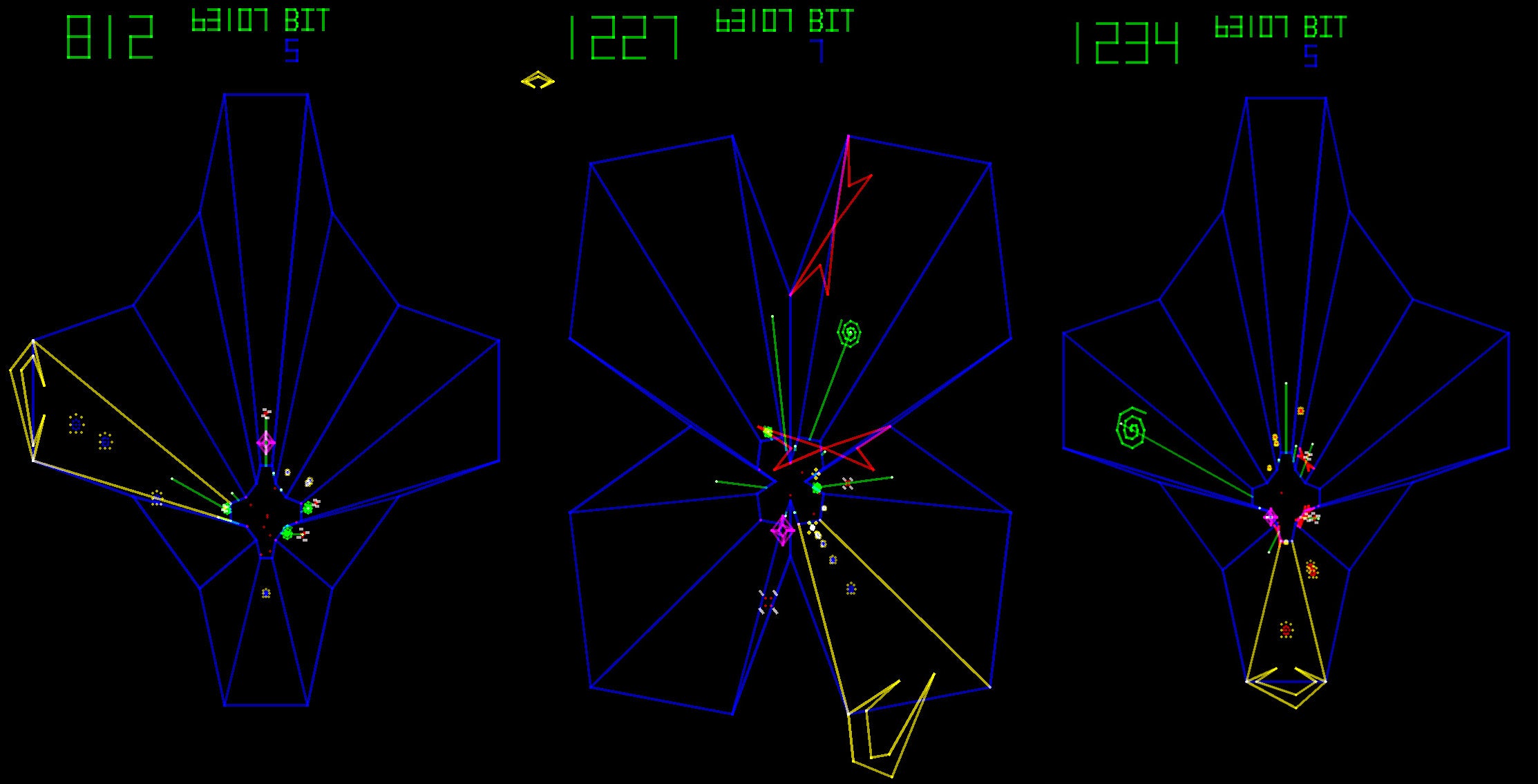Introduction
Released in 1981 by Atari, Tempest is one of the most innovative and visually captivating arcade games of its time. Designed by Dave Theurer, the creator of Missile Command, Tempest stands out as one of the first games to feature vector graphics, a technology that gave it a sleek, sharp, and distinct visual style compared to the traditional raster graphics of the era. Known for its fast-paced, challenging gameplay and unique "tubular" design, Tempest became a popular hit in arcades and remains a key piece of arcade gaming history.
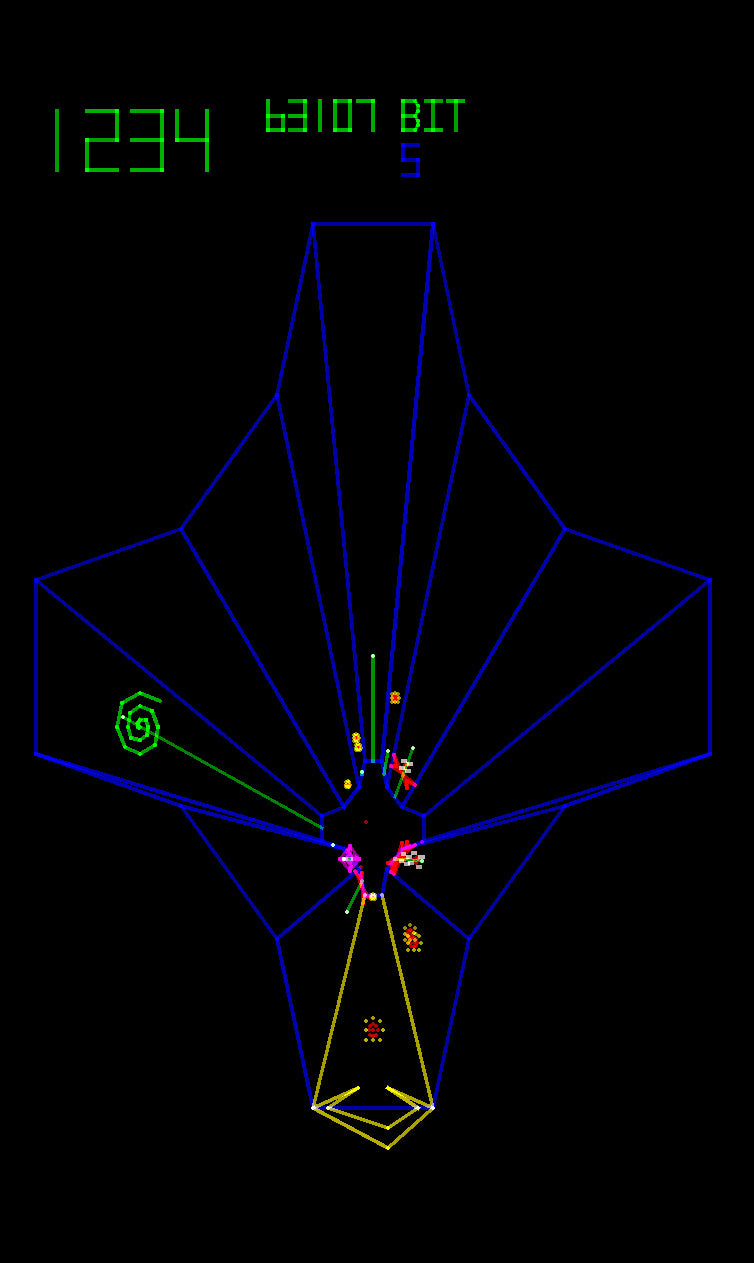
History and Development
Tempest was developed by Atari and designed by Dave Theurer. Released during the golden age of arcade gaming, it was one of the first major titles to use vector graphics, delivering clean, crisp visuals that stood out from traditional raster-based graphics.
The game’s bright wireframe visuals and unique rotary control knob made it both innovative and addictive. Despite its challenging gameplay, Tempest became a top performer in arcades, securing its place as a classic in gaming history.

History of Tempest Video
Gameplay and Objectives
In Tempest, players control a spacecraft positioned on the edge of a "tunnel" (which looks like a vector representation of a geometric shape). The objective is simple: defend your ship from waves of enemies while navigating through the tunnel, avoiding obstacles, and trying to reach the highest possible score.
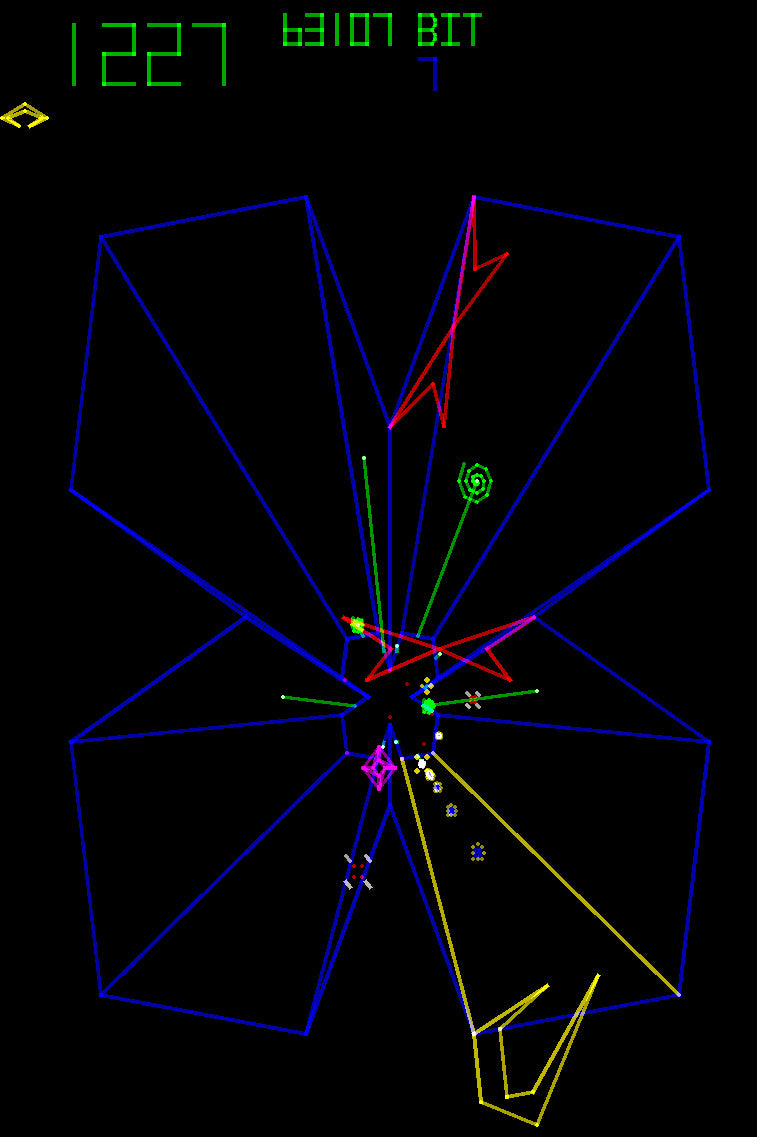
Key Gameplay Features:
Vector Graphics: One of the most notable features of Tempest is its use of vector graphics, a stark departure from the pixel-based graphics seen in most other games at the time. The crisp, clean lines and vibrant colors of the game’s visuals made it stand out in arcades.
Rotary Control: Instead of a standard joystick, Tempest used a rotary dial control that allowed players to rotate their ship around the edge of the tunnel. This provided precise movement and added a layer of strategy, as players could rotate quickly to avoid incoming enemies or attack.
Enemies: The game features various types of enemies, including:
- Spiders: These enemies climb the walls of the tunnel and make their way toward the player’s ship.
- Bats: These enemies fly across the screen in erratic patterns, making them difficult to avoid.
- Tankers: Large enemies that require multiple hits to destroy.
- Maggots: Smaller enemies that are quick and can appear in large numbers.
The Tunnel: The playing field is represented as a geometric tunnel (a series of lines or shapes), and enemies attack from the inner part of the tunnel. Players must clear the tunnel of enemies while avoiding colliding with the tunnel’s walls or being hit by enemy projectiles.
Levels and Difficulty: As players progress, the levels become more difficult, with faster enemies, new obstacles, and more challenging attack patterns. The game also introduces different types of "tunnels" or paths as the player advances.
Tip for Players: Mastering the rotary control and quickly reacting to fast-moving enemies is key. Keep a close eye on the tunnel’s walls and the enemies’ attack patterns to avoid being caught off guard.
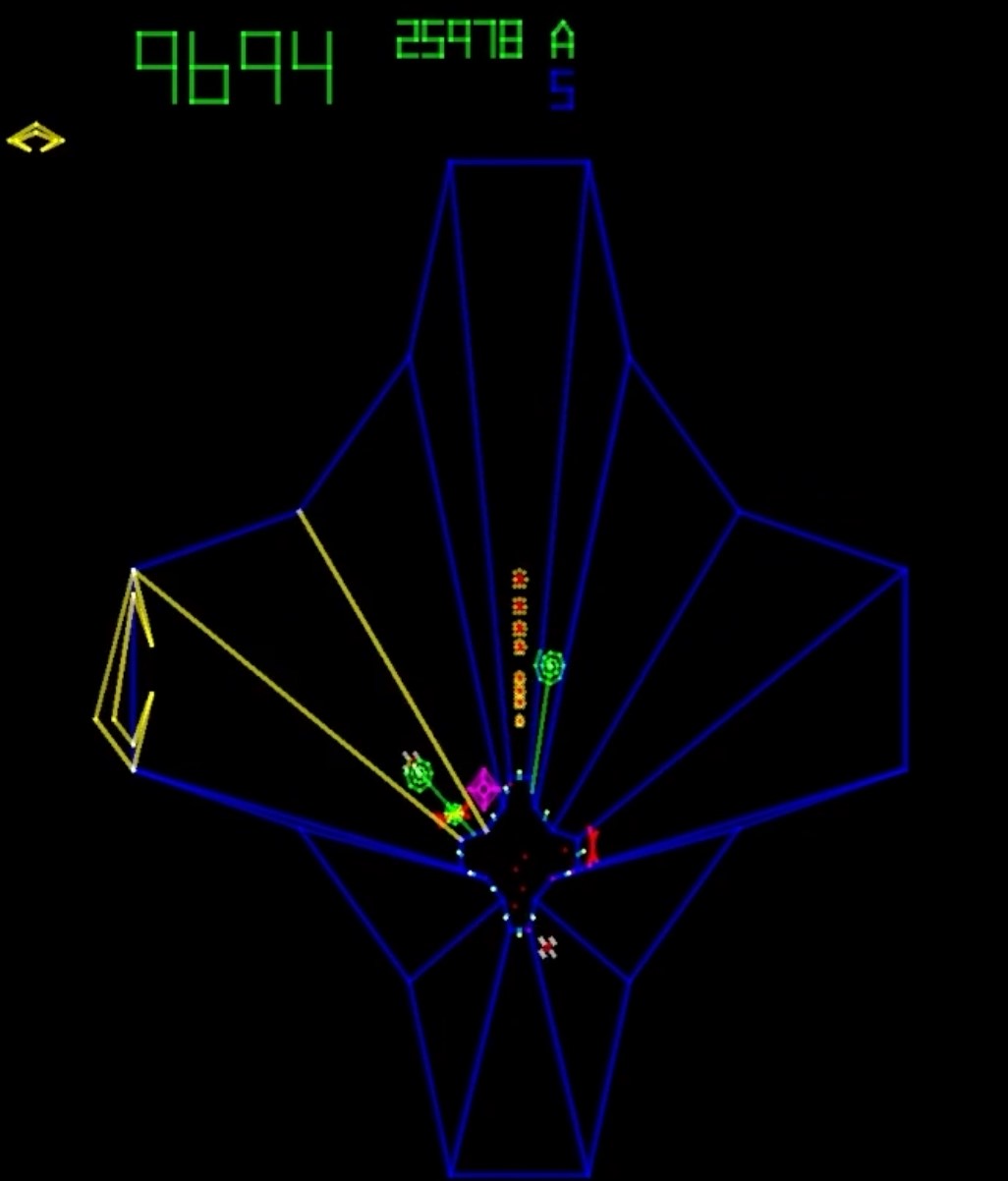
Tempest: Lightning-Fast Gameplay
Tempest arcade's uniqueness lies in its lightning-fast gameplay. Players dart through a geometric tunnel, combating rapid enemy waves. This heart-pounding pace sets Tempest apart, demanding split-second decisions and lightning reflexes, making it an unforgettable classic in the world of arcade gaming.
Unique Features and Gameplay Mechanics
Tempest was a ground-breaking game that pushed the boundaries of what was possible in arcades, offering several features that would go on to influence future games in the shooter genre.
Key Innovations:
- Vector Graphics: Tempest was one of the first major arcade games to use vector graphics, which gave it a distinctive look. This type of graphics allowed for precise and smooth lines and shapes that were not possible with the pixel-based systems of the time.
- Rotary Dial Control: Instead of using a traditional joystick, Tempest featured a rotary dial control, which allowed players to rotate their ship around the tunnel. This added a level of depth and precision to the gameplay, as players could easily spin around the playing field and attack enemies from different angles.
- Dynamic Difficulty: The game's difficulty escalated quickly, with increasing speed and complexity in the patterns of enemy attacks. This dynamic difficulty kept players engaged and motivated to continue progressing.
- Addictive Scoring System: Players could rack up massive points by clearing waves of enemies, and the competitive aspect of trying to achieve a high score made the game addictive and kept players coming back for more.
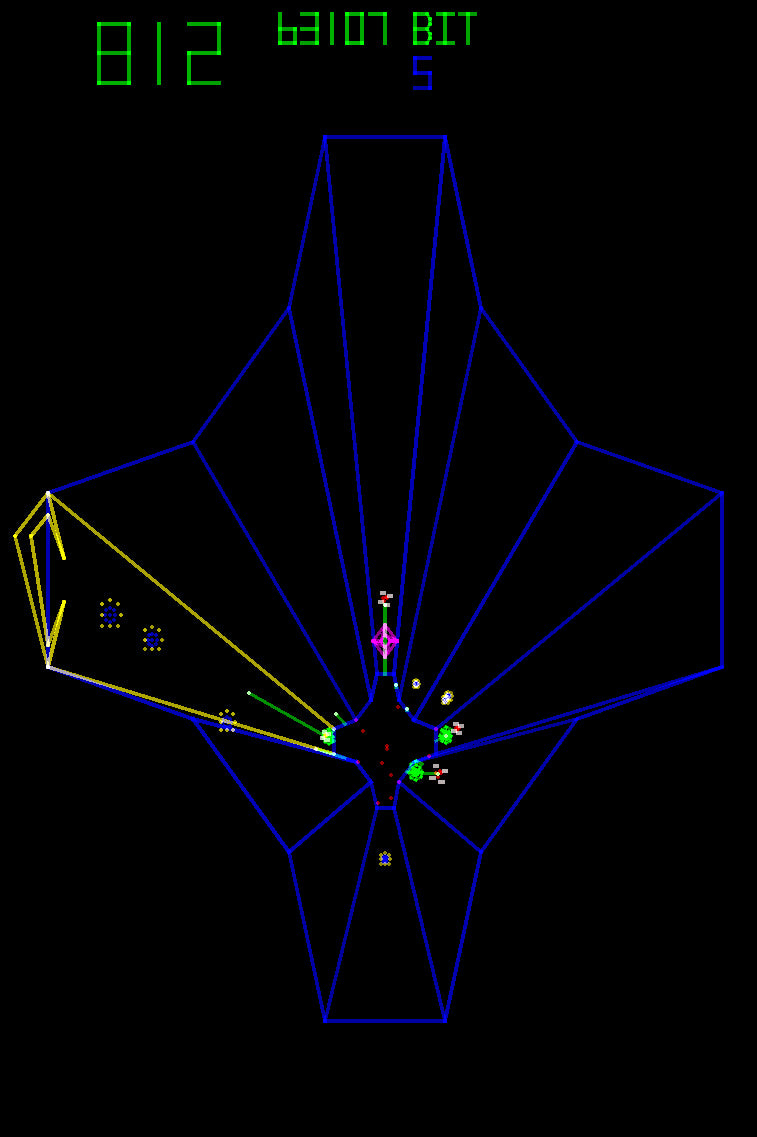
Strategies for High Scores
- Learn Enemy Patterns: The enemies in Tempest follow specific patterns. By learning these, you can predict their movements and react accordingly to avoid getting hit.
- Use the Rotary Control Effectively: The rotary control allows for quick movements, but you must also be careful not to spin too far. Practice controlling your ship’s movements to avoid unnecessary risks.
- Clear the Tunnel Efficiently: Don’t waste time; focus on clearing enemies as quickly as possible. Take advantage of the speed of your ship and try to eliminate threats before they can become a problem.
- Collect Power-Ups: If available, make sure to pick up any power-ups that can help you survive longer or increase your score. This includes bonus points or speed boosts.

Tempest Gameplay Video
Legacy and Player Reception
Tempest was a revolutionary game for its time, not only because of its unique graphics and gameplay but also due to its high level of difficulty and addictiveness. Despite being challenging, the game’s innovative features and intense action made it a hit in arcades. Tempest was one of the first vector-based games to achieve commercial success and influenced many later games in the genre.
Community Feedback:
- Players Appreciate: The game’s crisp, clean graphics, unique rotary control, and fast-paced gameplay. Fans also appreciate the game’s challenging difficulty and high score competition.
- Critics Note: Some players found the game’s difficulty overwhelming at first, but once they learned the patterns, Tempest became a rewarding experience.
Awards and Recognition: Tempest was recognized as one of the top arcade games of the early 80s. It has been included in numerous "best of" lists and is considered a key title in the history of arcade gaming.
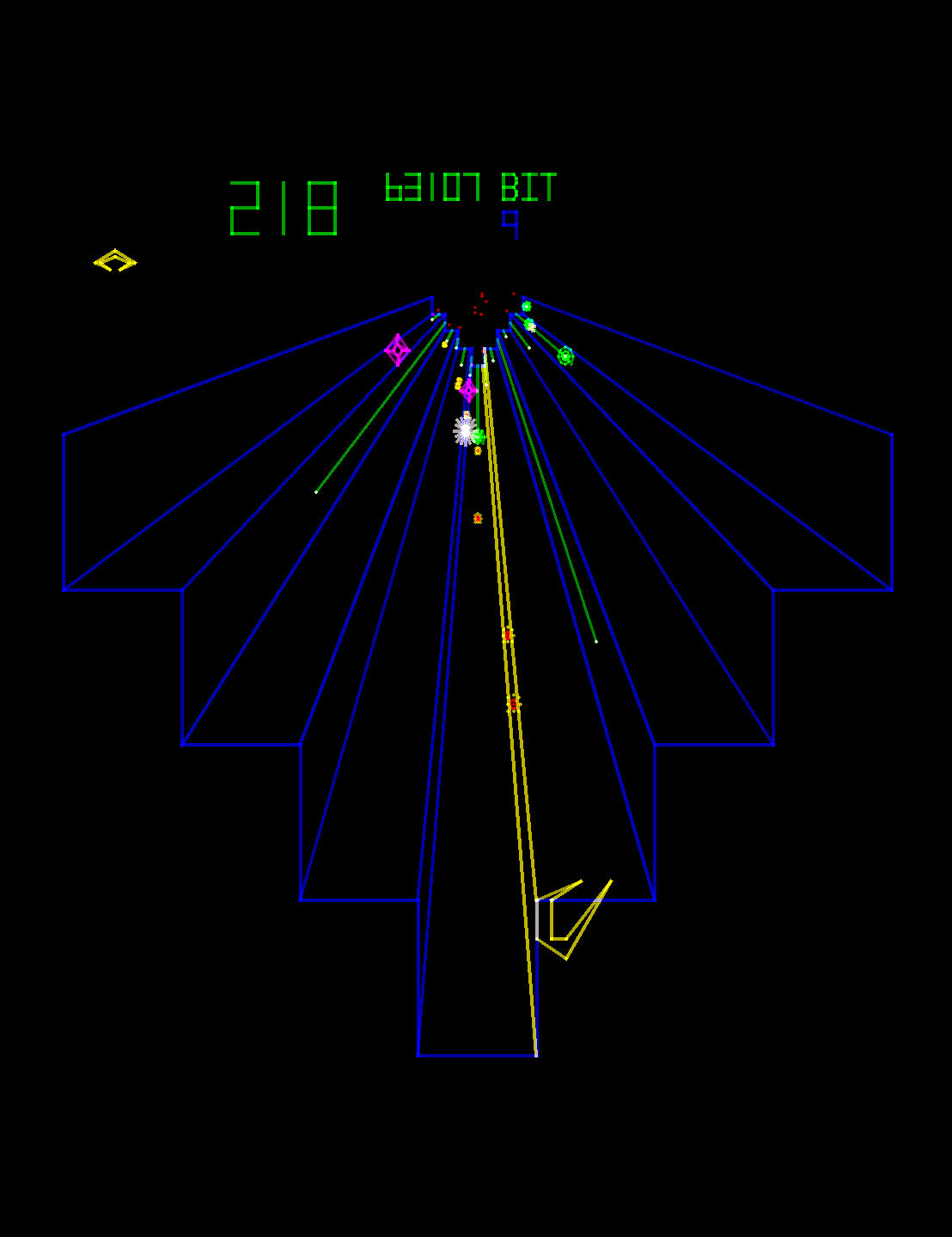
Fun Facts
- Vector Graphics Innovation: Tempest was one of the first games to use vector graphics, setting it apart from other games that used bitmap-based images.
- Unique Controls: The rotary control was unique and became one of the most memorable features of Tempest. It provided precise movement and a level of control that was unmatched by most arcade games of the time.
- Legacy in Modern Gaming: Tempest influenced many future games, particularly in the twin-stick shooter genre, and has inspired remakes, sequels, and adaptations across various gaming platforms.
Conclusion
Tempest is an iconic arcade game that revolutionized the shooter genre with its use of vector graphics and innovative controls. Its fast-paced action, challenging gameplay, and dynamic difficulty make it a classic that continues to captivate gamers today. Whether you’re revisiting this retro gem or playing it for the first time, Tempest offers an exciting and thrilling experience that remains a cornerstone of arcade gaming.
Explore More: Enjoy classic arcade shooters? Check out our guides on Asteroids, Space Invaders, and Robotron: 2084 to discover more iconic arcade games!
Questions you might have:
What is Tempest Arcade?
Tempest Arcade is a classic arcade video game released in 1981 by Atari. It belongs to the shooter genre and is known for its unique, tubular, 3D-like playing field. In the game, players control a claw-shaped spaceship called the "Blaster" and must eliminate various geometric shapes, known as "Flippers" and "Fuseballs," while avoiding their attacks. The objective is to survive as long as possible, clear all levels, and achieve the highest score. Tempest is recognized for its fast-paced action, challenging gameplay, and distinctive vector graphics.
Who Developed Tempest Arcade?
Tempest Arcade was developed by Atari, one of the pioneering companies in the arcade and video game industry. The game's development team included notable figures such as Dave Theurer, who designed the game, and Ed Rotberg, who contributed to its development. Atari was renowned for its innovative arcade titles during the golden age of arcade gaming, and Tempest was one of their standout creations.
What Are the Gameplay Mechanics of Tempest Arcade?
Tempest Arcade features a unique gameplay style. Players control the Blaster, which moves along the edge of a geometric shape called the "Web." The objective is to shoot and destroy approaching Flippers and Fuseballs while avoiding their attacks. The game progresses through progressively challenging levels, introducing new enemies and obstacles. Players earn points for each enemy destroyed and advance by completing levels. Tempest's distinctive feature is its pseudo-3D, vector-based graphics that create the illusion of depth and immersion.
When Was Tempest Arcade Released?
Tempest Arcade was first released by Atari in 1981. This release date places it firmly within the golden age of arcade gaming, where it became a notable title among the diverse range of arcade games available at the time. Its release contributed to the arcade gaming boom of the early '80s.
Is There Any Strategy or Tips for Playing Tempest Arcade?
Yes, there are several strategies and tips for playing Tempest Arcade effectively:
- Master the controls: Get comfortable with the Blaster's movement and firing mechanics to navigate the Web and aim accurately.
- Prioritize targets: Focus on destroying Flippers and Fuseballs that are closest to your position to reduce immediate threats.
- Use Superzapper sparingly: The Superzapper is a limited-use, screen-clearing power-up, so save it for challenging situations.
- Pay attention to enemy patterns: Learn the movement patterns of different enemies to anticipate their attacks.
- Stay on the move: Continuous movement along the edge of the Web can make you a harder target for enemies.
- Clear levels quickly: Completing levels promptly can earn you bonus points and reduce the overall difficulty.
Mastering these strategies can help players achieve higher scores and extend their gameplay in Tempest Arcade.

